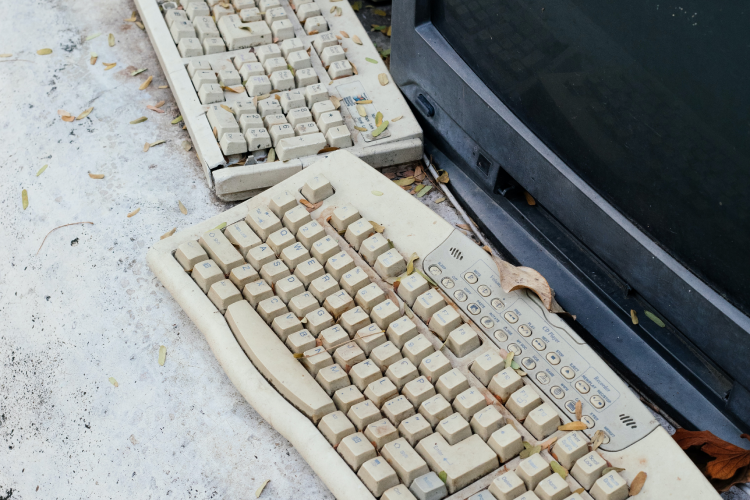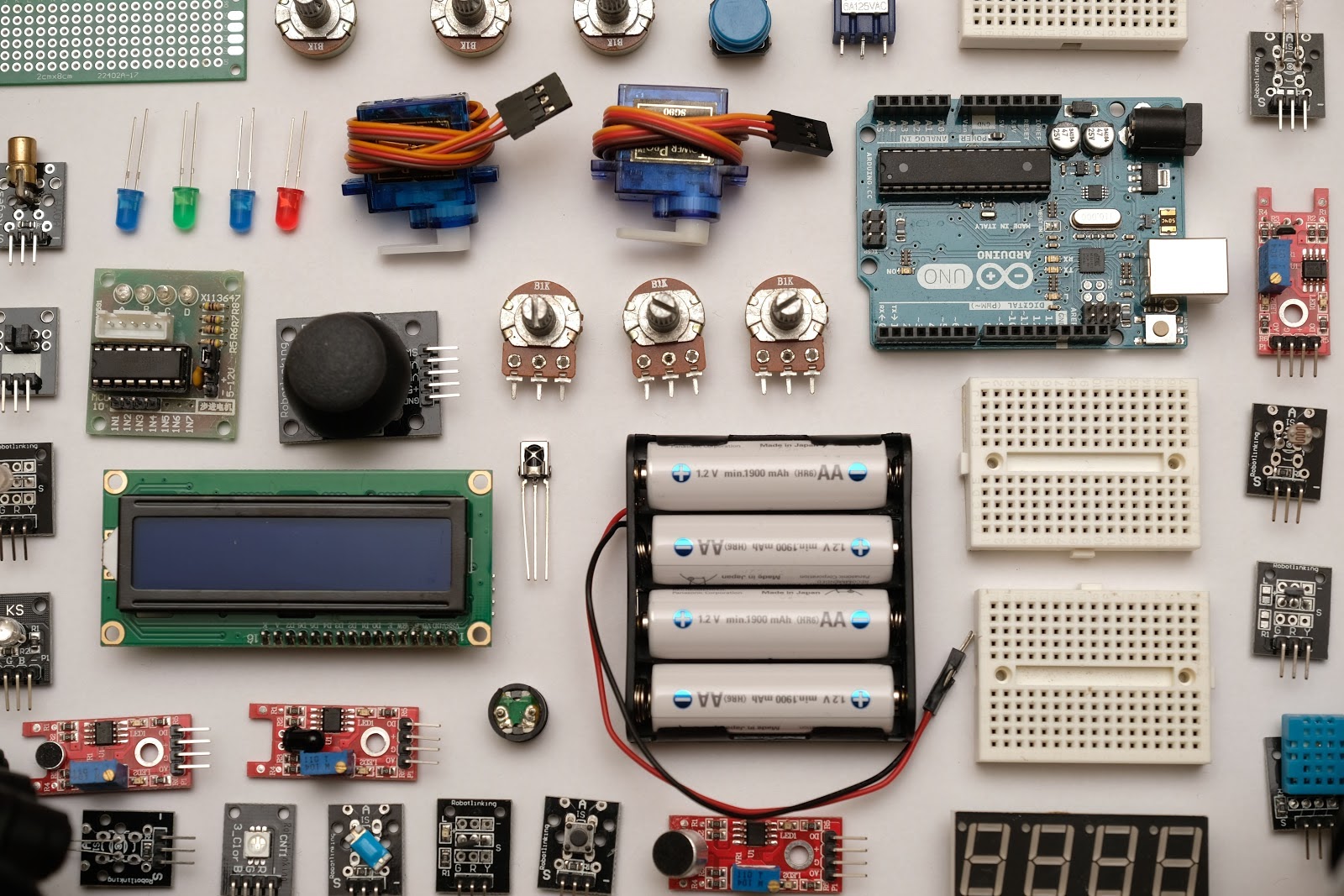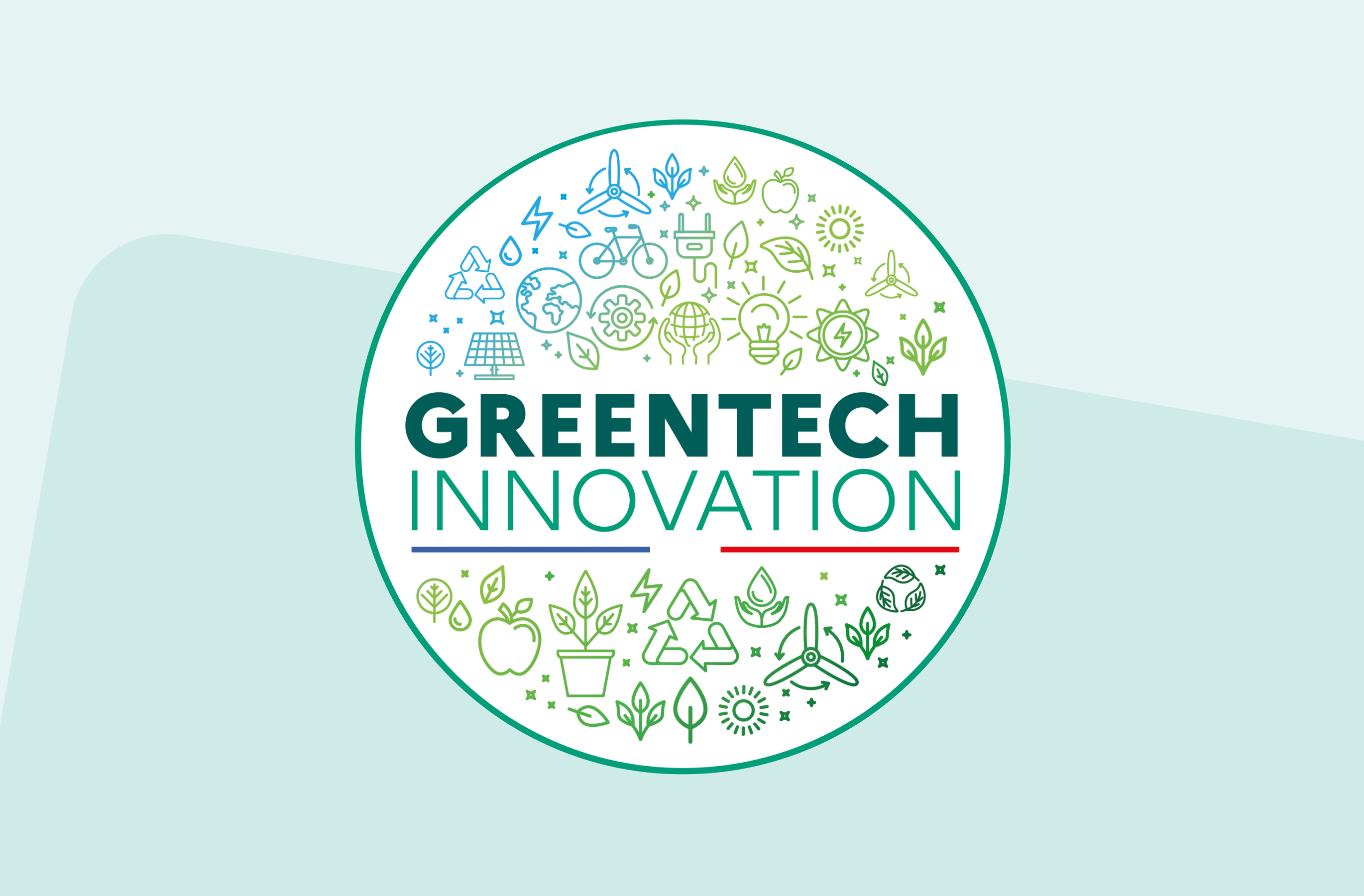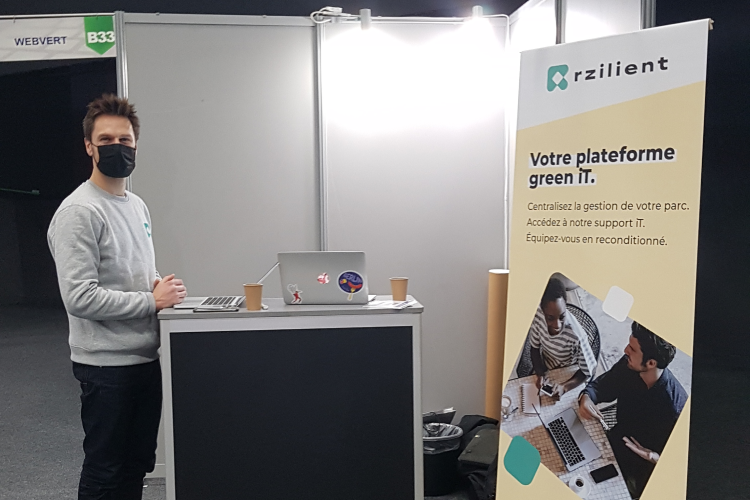Pollution numérique : quelle est l'empreinte carbone du digital ?

Découvrez notre solution tout-en-un
Ordinateur, tablette, montre connectée, assistant vocal ; que ce soit à la maison ou au travail, tous ces appareils électroniques semblent indispensables. À première vue assez anodins, ils produisent en réalité une pollution numérique assez conséquente, que ce soit à cause de leur fabrication ou leur utilisation. Aujourd’hui, de nombreuses entreprises se penchent sur la question de l’empreinte carbone du numérique pour réduire ses coûts écologiques et économiques.
Mais c’est quoi exactement la pollution numérique ? Quels sont les chiffres de cette pollution ? Est-ce qu’il y a des gestes qu’on peut adopter pour diminuer l’empreinte carbone du digital en entreprise ?

La pollution numérique, qu’est-ce que c’est ?
La pollution digitale, on en entend de plus en plus parler, surtout avec tous les nouveaux outils numériques qui arrivent sans cesse sur le marché. Même si l’on ne la voit pas, cette pollution virtuelle est bien réelle.
Pour définir la pollution numérique, on peut dire que ce sont toutes les formes de pollution émises par les nouvelles technologies et leur impact sur l’environnement. Cela concerne :
- l’érosion des sols et la perte de la biodiversité
- la pollution chimique
- la production de déchets électroniques à cause de la difficulté à recycler ces objets.
- les émissions de gaz à effet de serre
Les effets néfastes sont induits majoritairement par la fabrication des appareils du numérique. En soi, on peut les utiliser (presque) comme bon nous semble, mais si on change la flotte numérique de son entreprise chaque année, l’impact environnemental sera énorme.
Cette pollution digitale concerne tout le secteur, des serveurs aux infrastructures réseaux. C’est toute la chaîne qui entre en compte dans l’empreinte carbone du digital.
La pollution digitale provient de 7 sources principales :
- les équipements numériques
- les centres de stockage de données
- les e-mails
- les réseaux sociaux
- le streaming
- l’impression de documents numériques
- les moteurs de recherche
La question de la pollution numérique n’est donc pas à négliger quand on est une entreprise qui veut réduire son empreinte carbone, et s’engager dans une démarche RSE.
Quelle est l’empreinte carbone du numérique ?
Une fois qu’on a pris conscience de tous les maillons de la chaîne digitale, quelle est l’empreinte carbone du secteur ? Voici quelques chiffres sur cette pollution numérique, que ce soit pour la fabrication ou l’utilisation de ces outils du quotidien.
Le think-tank The Shift Project détaille dans son rapport de juillet 2019 que la pollution numérique représente 4 % des gaz à effet de serre mondiaux. Pour donner un ordre de grandeur, si Internet était un pays, il serait le 3e consommateur mondial d’électricité, derrière la Chine et les États-Unis.
Il y a une réelle démesure énergétique où les émissions de gaz à effet de serre se concentrent surtout lors des premières étapes de vie d’un appareil. Pour un smartphone, cela peut représenter jusqu’à 90 % des émissions !

La fabrication des appareils numériques
Pourquoi est-ce que les appareils numériques polluent autant lors de leur fabrication ? Le problème réside dans l’extraction des matières premières nécessaires à leur construction. Plus ces nouvelles technologies sont complexes, plus elles ont besoin de matériaux rares.
Tantale congolais, or australien, lithium bolivien, tout cela se retrouve dans nos outils numériques du quotidien. Leur extraction, en plus d’épuiser ces ressources naturelles, nécessite beaucoup d’énergie, souvent fossile, de l’eau et une main-d'œuvre conséquente.
En plus de l’extraction très polluante, puis la fabrication, il faut ensuite importer le produit fini. Toute cette pollution invisible se nomme la pollution importée.
Par exemple, la fabrication d’un ordinateur nécessite en moyenne :
- 240kg de combustibles fossiles
- 22 kg de produits chimiques
- 1,5 tonne d’eau.
Il est d’autant plus alarmant que ce secteur soit en pleine expansion. Le rapport de Green IT de juin 2020 souligne qu’il pourrait y avoir une augmentation de 9% d’énergie consommée par an par le secteur numérique, pour la production et l’utilisation.
En France, on estime que 60 millions de personnes utilisent les 631 millions d’équipements numériques présents sur le territoire. Cela revient à une moyenne de 11 appareils par personne ! Mondialement, ce chiffre tourne autour de 8 et englobe :
- les ordinateurs
- les téléphones
- les montres connectées
- les télévisions
- les assistants vocaux
- les enceintes Bluetooth.
L’impact environnemental d’internet
En 2020, 59 % de la population mondiale allait sur internet d’après le rapport Digital 2020 de We Are Social. Cela peut sembler assez raisonnable, mais c’est un chiffre en constante augmentation ! En 2018, 1 million de nouveaux utilisateurs a rejoint internet, chaque jour !
30 % de l’énergie utilisée dans le secteur numérique sert à l’utilisation quotidienne de nos appareils, 20 % sont utilisés pour les réseaux sociaux, et 15 % de la consommation d’énergie fait tourner les data centers.
Naviguer sur internet, même si cela semble sans conséquences, est source de pollution. Par exemple, 2 recherches sur Google génèrent environ 15 gr de CO2, ce qui équivaut à la consommation de 113 litres d’eau du robinet.
Pourtant, internet est aujourd’hui indispensable dans les domaines professionnels et personnels. Mais des gestes simples existent pour réduire l’empreinte carbone du numérique.

Les gaz à effet de serre des e-mails
S’il y a bien une chose qui prouve que la pollution numérique n’est pas seulement virtuelle, c’est la prise de conscience qu’il y a eu ces dernières années autour des e-mails qui peuvent vite avoir un impact non négligeable.
L’envoi d’un e-mail avec une pièce jointe d’1 Mo équivaut à 1 ampoule restée allumée pendant 1 heure, soit 19 gr de CO2. Et plus la pièce-jointe d’un e-mail est lourde, plus l’empreinte carbone sera importante.
Une entreprise d’une centaine de salarié·es, qui envoie en moyenne 332 e-mails au quotidien, va avoir une empreinte carbone sur ce poste équivalant à 13 vols aller-retour de Paris à New-York.
Et la 5G là-dedans ?
Souvent, on entend dire que la 5G serait plus écologique car à volume de données égal, cette dernière utiliserait moins d’énergie que la 4G. Ce n’est pas faux en soi, mais le basculement vers la 5G implique de nombreux changements, qui eux, sont très polluants.
Les volumes de données transférées seront bien plus conséquents, ce qui fera augmenter la consommation d’électricité et d’énergie : il s’agit du fameux effet rebond. De même, pour utiliser ces nouveaux appareils compatibles avec la 5G, il faut changer tous les équipements de l’infrastructure du réseau 4G, et les appareils des particuliers.
Selon une étude du Haut Conseil pour le Climat, la mise en place de la 5G entraînera une hausse de 18 à 45 % de l’empreinte carbone du numérique en France d’ici 2030. Cela prend en compte l’explosion de nouveaux terminaux connectés et les infrastructures.
Quelques gestes à adopter pour diminuer sa pollution numérique en entreprise ?
1. Faire attention à l’utilisation de sa boîte mail
Des gestes simples peuvent déjà avoir un effet significatif sur l’impact numérique au sein d’une entreprise :
- éviter l’envoi de pièces-jointes trop volumineuses. Par exemple, FileVert permet de transférer des fichiers de manière vertueuse et éco-responsable.
- réduire le nombre d’envois en décochant l’option automatique “répondre à tous”
- faire le tri régulièrement et supprimer sa corbeille et ses spams
- se désabonner des newsletters que l’on ne lit plus
- éviter les signatures et les images si cela n’est pas pertinent.
Combinés à un moteur de recherche qui compense l’empreinte carbone, comme Ecosia, ces gestes peuvent en réalité avoir un impact significatif sur la réduction de la pollution numérique d’une entreprise.
2. Faire durer la vie de ses appareils
L’obsolescence programmée, on sait tous et toutes ce que c’est. Mais comment réussir à allonger la vie des terminaux en entreprise ? En plus de chercher à réparer un appareil s’il est cassé, voici quelques conseils qui peuvent aider àprolonger la vie des équipements numériques :
- respecter les conseils de charge
- utiliser le mode économie
- éviter d’ouvrir trop d’onglets et de logiciels en même temps
- entretenir régulièrement sa flotte IT par un·e professionnel·le et les protéger contre les virus
3. Gérer ses données
Peu d’entreprises prennent le temps de faire un réel tri dans les données qu’elles stockent. Le mieux reste de s’informer sur la durée légale de conservation de chaque type d’élément de preuve afin de trier au mieux et de garder seulement le nécessaire.
Cela permet d’être également mieux organisé et d’avoir une meilleure protection des données personnelles.
4. Penser à la location de matériel
Il n’est pas toujours nécessaire d’acheter des terminaux neufs pour renouveler sa flotte IT. En plus de réduire l’impact écologique de l’entreprise, louer du matériel informatique diminue très fortement les coûts du budget numérique.
La location de matériel informatique s’inscrit dans une réelle démarche d’économie circulaire où les avantages sont nombreux :
- un accompagnement et un service de maintenance : rzilient vous garantit notamment un service après-vente effectif dans les 48h
- une gestion flexible avec des locations sans engagement et la possibilité d’achat du matériel à la fin du contrat
- éviter l’obsolescence programmée
- pas besoin d’une grosse trésorerie pour débloquer l’achat de la flotte IT
5. Privilégier le reconditionné
L’ONU, dans un rapport de 2013, indique que 75 % des déchets électroniques ne passent pas par des filières de recyclage. Ils sont exportés illégalement vers des pays comme l’Inde ou la Chine et s’entassent dans d’énormes décharges.
Et puis, il est très difficile de recycler tous les petits composants et les matières précieuses de nos téléphones, ordinateurs, et globalement de nos appareils numériques, car leur design rend la séparation des matériaux difficile.
Est-ce un besoin, ou bien l’envie d’avoir le dernier appareil à la mode ? Des promotions parfois alléchantes peuvent donner envie de renouveler toute la flotte d’appareils numériques.
Acheter un équipement reconditionné permet d’avoir l’assurance que ce dernier est réinitialisé, nettoyé et inspectéavant la vente. Il est moins cher qu’un appareil neuf pour les mêmes fonctions et caractéristiques.
Aujourd’hui la garantie minimum légale d’un appareil numérique reconditionné est de 6 mois, et passera à 12 mois à partir du 1er janvier 2022. Chez rzilient, cette garantie d’un an, avec possibilité d’extension, est déjà appliquée. On met tout en œuvre pour vous aider à passer le cap du reconditionné pour basculer vers la sobriété numérique grâce à l’achat ou la location de terminaux remis à neuf.
La sobriété numérique : la meilleure solution pour réduire la pollution digitale en entreprise
Tous ces petits gestes mis bout à bout tendent vers ce que l’on appelle la sobriété numérique.
C’est quoi la sobriété numérique ?
Le terme de “sobriété numérique” créé en 2008 par l’association Green IT, est une démarche qui vise à revoir ses services numériques de manière à les rendre plus sobres, et à modérer ses usages numériques quotidiens.
Les technologies numériques pourraient devenir aussi polluantes dans 5 ans que l’est le secteur automobile aujourd’hui.
Les quelques gestes à adopter pour un quotidien numérique plus vert au travail sont faciles à appliquer par les employé·es. Mais la sobriété numérique peut aller plus loin, avec une vraie réflexion en amont.
Comment l’atteindre ?
Prendre conscience des enjeux de l’impact environnemental du numérique, c’est déjà faire un premier pas dans le bon sens ! Vouloir déployer une sobriété numérique en entreprise permet de faire des choix en fonction des défis environnementaux à relever.
Il s’agit de réfléchir aux équipements de l’entreprise, au déploiement d’infrastructures, si elles sont nécessaires, et comment. Ce questionnement mène à celui des usages de chacun·e. Le tout est de chercher à avoir un système qui répond à des besoins réels, et d’identifier les conditions qui rendent pertinent le numérique dans son entreprise. Avant de mettre en place une innovation “smart”, il convient de se baser sur des bilans prévisionnels environnementaux pour voir s’ils sont vraiment “smart”.
La première étape pour tendre vers la sobriété numérique est de réfléchir au reconditionné. Le matériel reconditionné est d’ailleurs de plus en plus plébiscité dans les entreprises ! L’impact environnemental est moindre puisque les outils technologiques ne sont pas nouveaux. Leurs usages et leurs capacités restent les mêmes que pour les appareils neufs, mais l’impact environnemental est bien plus avantageux, tout comme les coûts économiques ! L’impact environnemental est moindre puisque les outils technologiques ne sont pas nouveaux. Leurs usages et leurs capacités restent les mêmes que pour les appareils neufs, mais l’impact environnemental est bien plus avantageux, tout comme les coûts économiques !






